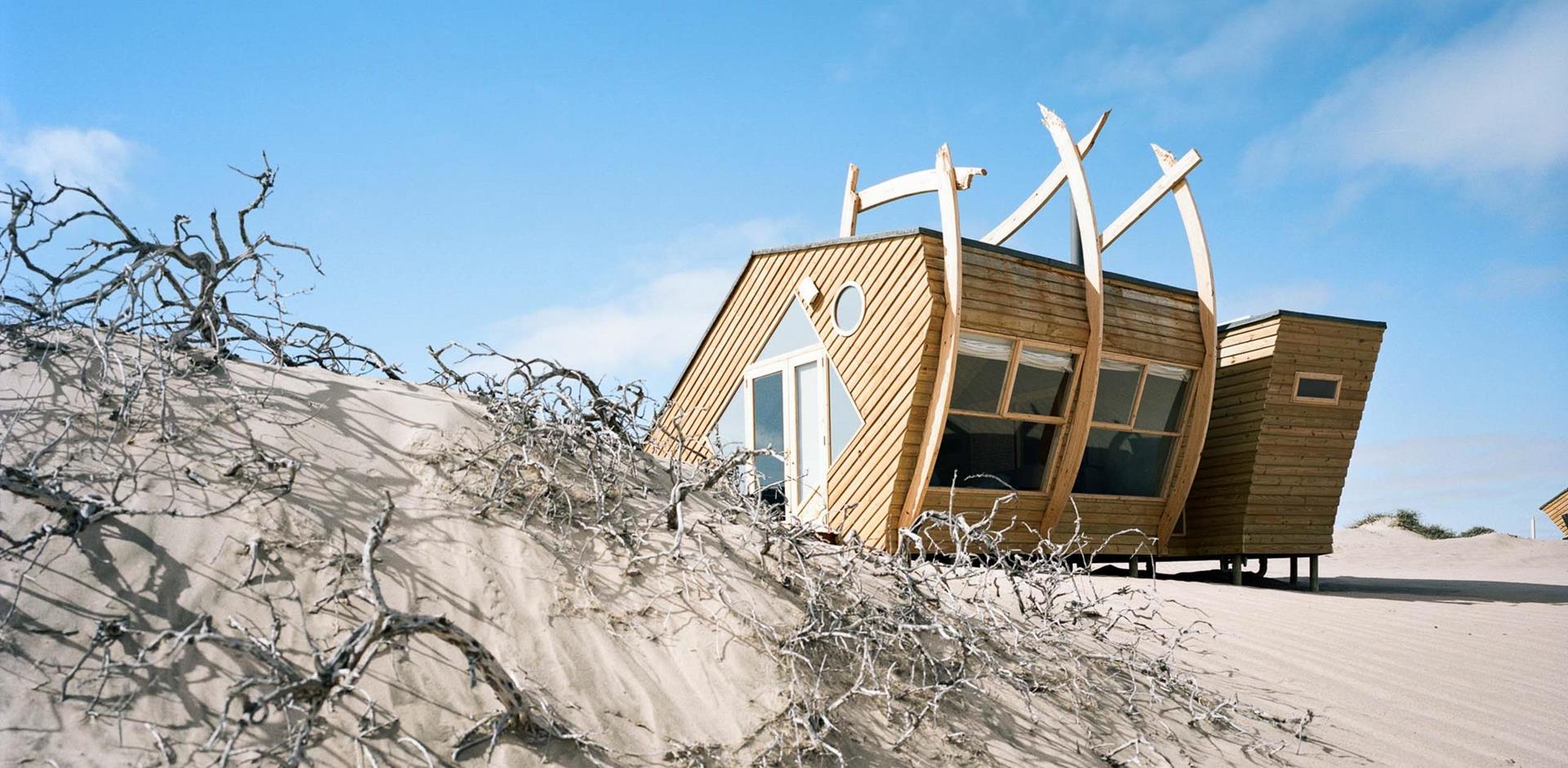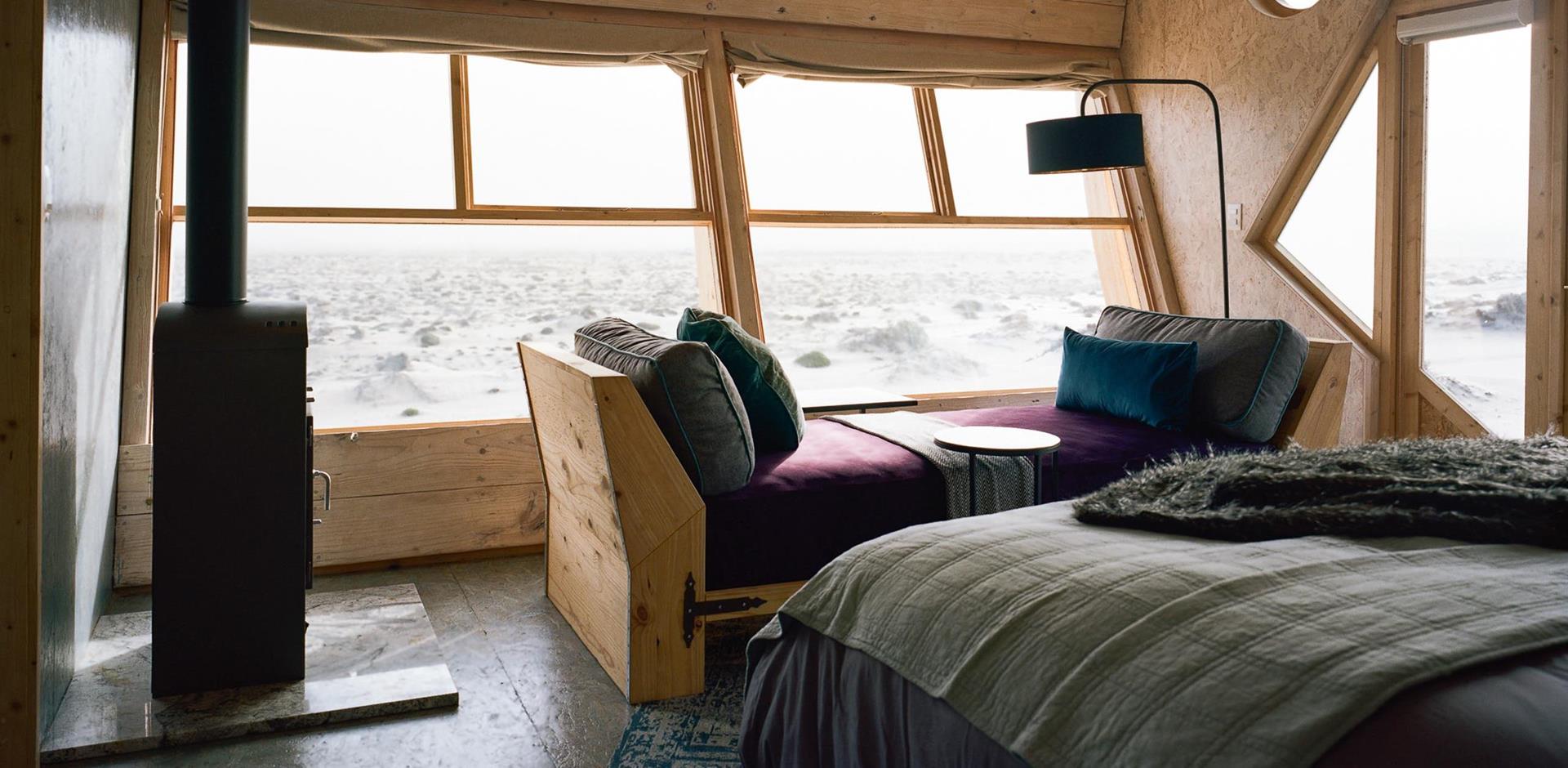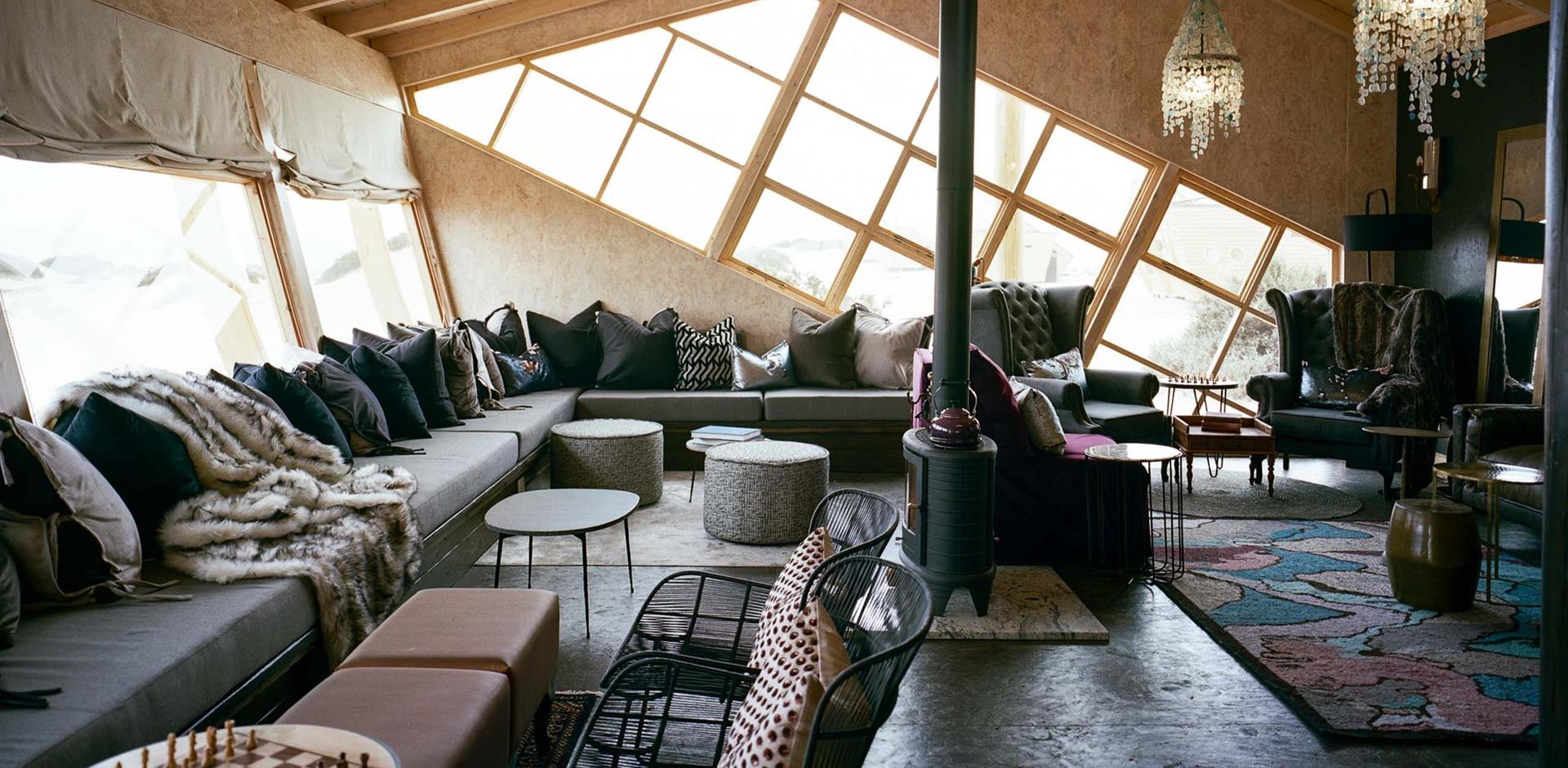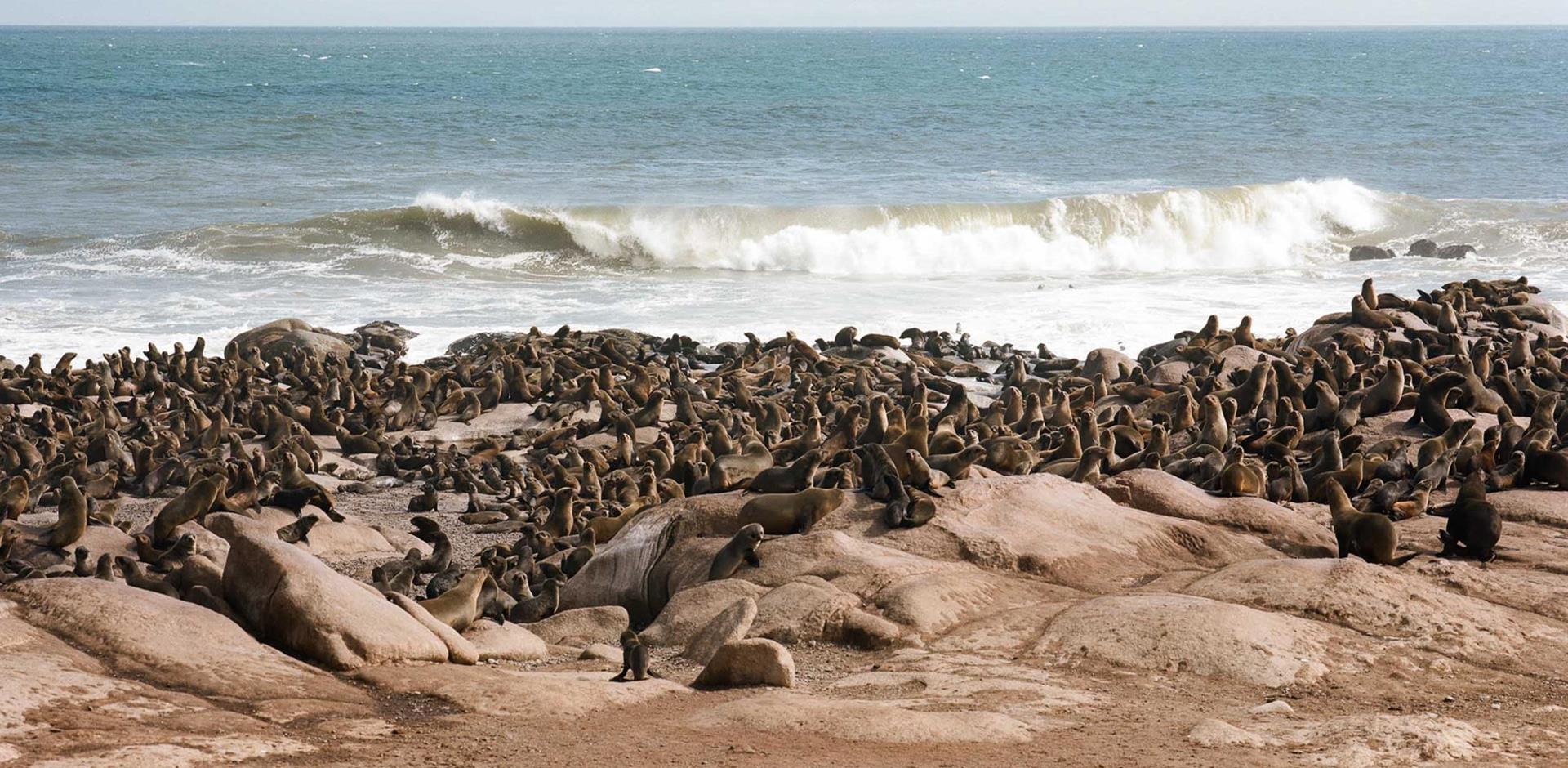Why we like it
- Stunning views of the dramatic dunes, mountains and Atlantic Ocean
- The novelty of staying in a solar-powered, shipwreck-shaped cabin
- Nautical touches of port holes and hammocks
- Visit the seal colony at Möwe Bay
- This remote, wild landscape dotted with shipwrecks and wildlife is a photographers’ dream
About Shipwreck Lodge
Find yourself a castaway among dramatic sand dunes and the Atlantic Ocean when you stay at Shipwreck Lodge. Be one of the first to step aboard the wooden cabins located between the Hoarusib and Hoanib river in Namibia’s Skeleton Coast Park. Despite the haunting scenery you’ll discover an area rich with wildlife from the black rhino, elephant, black-faced impala and the Hartmann’s mountain zebra.
The 10 solar-powered lodges are designed to reflect the desert landscape punctuated by shipwrecks and bleached whalebones. The interiors include authentic port-hole windows and nautical touches for a memorable stay. The spacious cabins feature two family units which links two en-suite rooms by an outdoor deck. Large windows allow the rooms to be bathed in light and feature hammocks along with décor inspired by the desert. Enjoy the glow from a wood burner stove during the cool evenings. All the rooms include a shower, toilet and wash basin along with writing desk and lamps.
During your time at Shipwreck Lodge, you can visit the seal colony at Möwe Bay, take a cruise on the Hoarusib River and see the natural geological formation of the Clay castles, home of the brown hyenas. Game drives will take you through the Skeleton Coast National Park and why not visit a real shipwreck in the form of two vessels, the Suiderkus and Karimona? After a day out exploring, you can relax with a sundowner on the viewing deck where you will see more of the wildlife who have adapted to live in Africa’s driest region.





